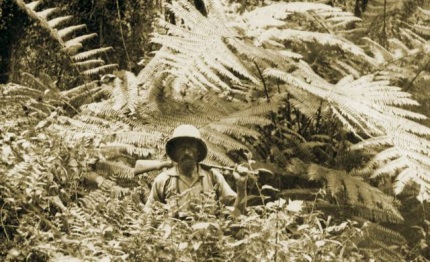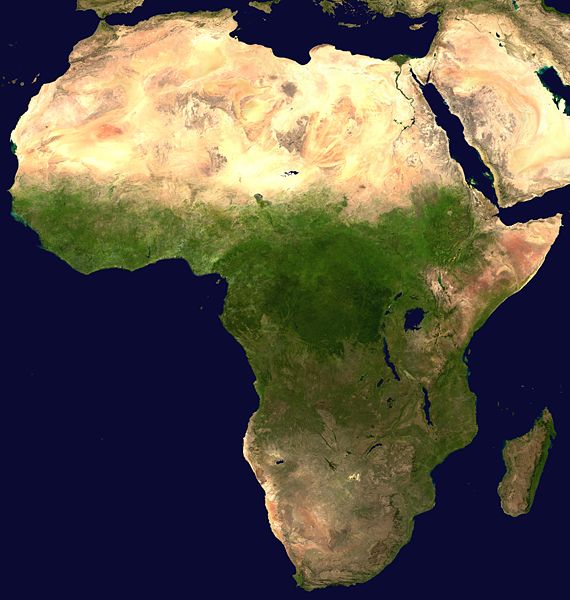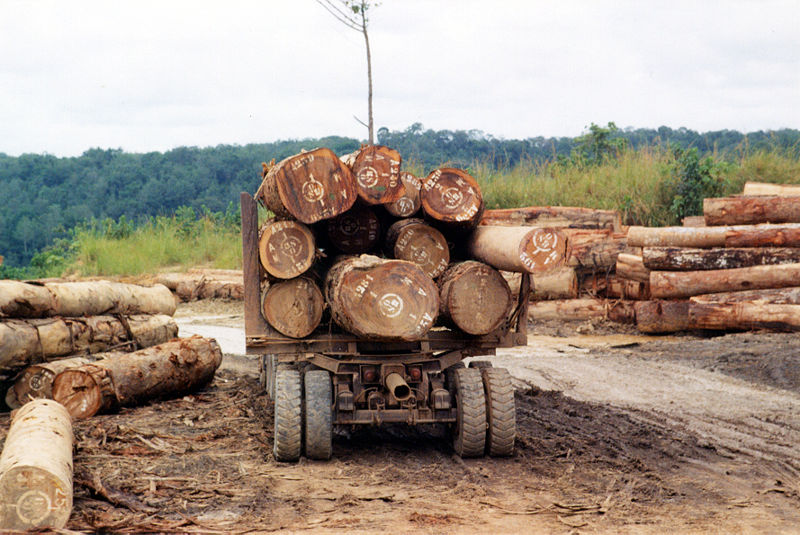
 The Western Gorilla's habitat consists mainly of
dense, tropical and
subtropical forested areas. Broadleaf tree species comprise most of the
large vegetation, and a thick understory and layer of
undergrowth
provide a lush environment to house and nourish the gorillas. 15
Learn more about the western gorilla's eating
habits here.
The Western Gorilla's habitat consists mainly of
dense, tropical and
subtropical forested areas. Broadleaf tree species comprise most of the
large vegetation, and a thick understory and layer of
undergrowth
provide a lush environment to house and nourish the gorillas. 15
Learn more about the western gorilla's eating
habits here. Such west-African forests generally have
high humidity and
considerable rainfall each year, with one drier season. The
Western Lowland subspecies inhabits lowland and swamp forests from
sea-level to an elevation of about 5250 feet, while Cross
River
Gorillas occupy forested lowlands and the foothills of mountains. 3
From this satellite image, the lush, forested areas of Africa are
clearly visible.
Such west-African forests generally have
high humidity and
considerable rainfall each year, with one drier season. The
Western Lowland subspecies inhabits lowland and swamp forests from
sea-level to an elevation of about 5250 feet, while Cross
River
Gorillas occupy forested lowlands and the foothills of mountains. 3
From this satellite image, the lush, forested areas of Africa are
clearly visible.  Unfortunately, these amazing ecosystems
are disappearing at an alarming rate,due to
deforestation to produce timber and farmland. Throughout the Western
Gorilla's range, logging increased by more than 100%
from 1991 to 2000! 9
Additionally, climate change due to global warming has led to
decreasing annual rainfall in these areas over recent decades, meaning
there could potentially be an increase in forest fires.9
Learn more about threats
to the Western Gorilla and its fertile home and what you can do to help
here.
Unfortunately, these amazing ecosystems
are disappearing at an alarming rate,due to
deforestation to produce timber and farmland. Throughout the Western
Gorilla's range, logging increased by more than 100%
from 1991 to 2000! 9
Additionally, climate change due to global warming has led to
decreasing annual rainfall in these areas over recent decades, meaning
there could potentially be an increase in forest fires.9
Learn more about threats
to the Western Gorilla and its fertile home and what you can do to help
here.--------------------------------------------------------------------------------------------------------------------------------------------------------------------------------------------------------------------------------------------------------------------------
Question
or Comments? Feel free to contact me at wussow.arik@students.uwlax.edu.
Site designed by Arika Wussow, Last updated April 2008.
MultipleOrganisms.net University of Wisconsin-La Crosse